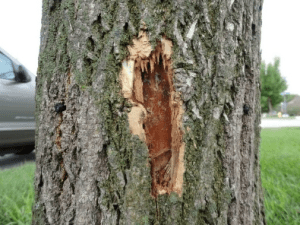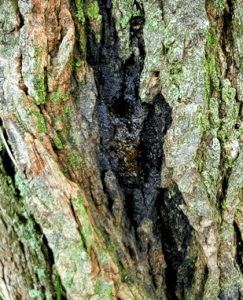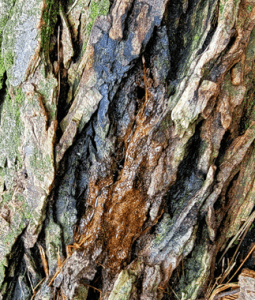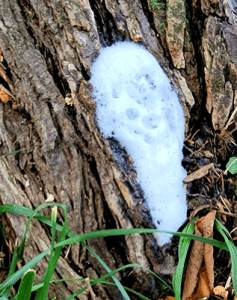Our company has delivered innovative, industry-changing, science-based solutions to protect urban forests from insects, diseases, and environmental factors throughout our 22-year history. Creating differentiation between competitive products is the role of marketing groups in every company, but the science of why we guide and advise you is not subject to the whims or creative energies of marketing teams. It is based on facts, not opinion. We base recommendations on the results that get reviewed by peers, proven by thousands of experiential trials by Arborists, across dozens of cities, and on hundreds of thousands of protected trees.
Arborplug(s), the device designed by Arborjet to seal an injection site and to allow the one-way flow of treatment material into the tree, were developed through years of exhaustive experimentation and after considering all extant technology at the time. Arborplugs were developed to address a great many concerns which existed then and which still exist today in injection systems which do not offer plug options. Here are some of the ways that plugs support and enhance injection technology and tree health.
Arborplugs assure that the injected chemistries are placed in the tree xylem, not in the tissue which is just inside the bark. Plugs assure that solvents used in treatment formulations do not contact the living, actively growing part of the tree. Plugs therefore significantly reduce the likelihood of damage to this sensitive tissue.
Hidden cambial damage and callous tissue from non-plugged injections caused by placing chemistry near cambium
When damage occurs to the cambium, the evidence is not immediately visible: it is hidden by the bark. This cambial damage as seen above often shows up to 1-3 years post injection and can leave visible, notable damage, which can initiate decay and disrupt the healthy vascular transport in a tree. It could even cost you a client when the damage becomes evident.
It has been suggested that injections cause internal decay, evidenced by discolored xylem found when trees are dissected. However, in a peer reviewed publication of Arboriculture & Urban Forestry (2016: 42(6): 389-399), results are presented from a study designed to assess the nature of xylem discoloration associated with injection of systemic insecticides; the authors (Tanis and McCullough) state; “… researchers examined 507 injection sites on 61 trees and found … no evidence of pathogen infection”. “Confocal laser scanning and polarizing digital microscopy were used to assess the integrity of discolored xylem tissue removed from the immediate vicinity of 140 injection sites, on 61 trees and found no evidence of decay associated with discoloration.” These trees were all injected through Arborplugs. Injection sites where plugs are used seal injection sites against opportunistic fungi and insects, thus clearly reducing the risk of infection or infestation which may occur in open injection sites. Dr. McCullough’s work as discussed above, validates these empirical observations.
Insecticide material leaking from non-plugged injection sites

Arborplugs keep product from flowing back out of injection sites. Arborplugs prevent accidental off-target exposure and assure that the full dose is delivered to the tree, giving the expected result. It may be suggested that you can save money by “doing without plugs”, but a single milliliter of lost product from an injection site without a plug will cost as much as the plug. Injections can also be performed at the pressure necessary for the most efficient treatment. Ultimately, the client wants to save their tree and to protect the environment while doing so.
Prevent infection from open injection sites. Since our beginning, we have offered both plugged and non-plugged injection. However, our experience, especially in urban forest and private home settings, is that plugs provide additional levels of protection for all involved – for the applicator, homeowners, children, pets, and the tree. Our general recommendation is to use plugs unless the project demands otherwise.
The tree pictured below had been injected three years earlier with a non-plugged system. Injection sites were still open and oozing. In a striking illustration, when we administered product into the tree with plugs (image on right), even in different locations from the old sites, our material began to leak from the old, still open injection sites. These open injection sites increase the risk of insect damage and disease, even years after initial treatment.
(Left and center) Non-plugged injection site still oozing 3 years post injection, and (right) new disease control flowing from old and not-close open injection site
A properly set Arborplug allows the tree to close over the top of the plug with xylem tissue. While the plug instantly closes off the injection site from opportunistic insects and diseases, bark will often close over the injection site in less than a year in all parts of the US. Arborplugs should be set to a depth, so a small ring of light-colored xylem is visible around the larger diameter of the outer plug (see below). The most common error in setting plugs is not placing them deep enough. That error can result in slower close-over or in the plug being pushed out of the tree in a year or two.
An example of properly set Arborplugs, and on the right a closed-over Arborplug injection site
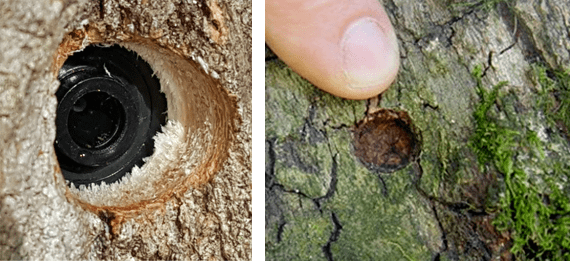
Arborplugs speed the closure of injection site. The Arborplug acts in much the same way as a properly pruned branch: by closing over the branch collar. The xylem moves horizontally across the top of the plug, just like a pruned branch stub. Below, you can see branches that have decayed in nature (left pic) may leave a large gaping hole which may take years to close over. I have found that similarly, unplugged injection holes may remain open for years, and sometimes leak product during the next treatment a year or more later, because they are still open.
Open injection sites provide a toehold for opportunistic insects and diseases to enter the tree, much like branch dieback areas. A plug instantly seals that injection site, limiting an incursion by pests.
Branch dieback leaving large hole despite fully intact branch collar. As branch collar grows over a branch stub (right), the hole closes.
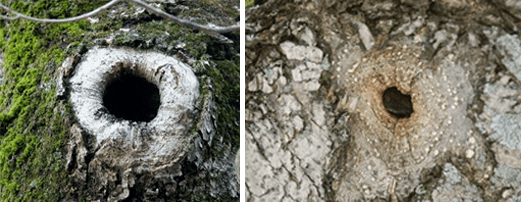
(Left) Sealed injection site with plug 9 months after treatment, (middle and right) two injection sites without plug 2 years post-treatment

Arborplugs prevent applicator exposure during injection. Injection systems create pressure upon injection with uncertainty whether the tree has fully taken up the chemistry, and whether the pressure has equalized after injection before removal of the injector. The plug has a one-way rubber septum which allows material to enter the tree, but upon removing the injection needle, the plug reseals, keeping the full dose in the tree, and away from the applicator and the environment
Properly set plugs are grown over and enclosed by new xylem, as these pictures demonstrate
Because an Arborplug has 3 barbs to secure the plug in the xylem, damage to bark is eliminated when set correctly as above. Additionally, when adverse weather, poor tree health, or vascular tissue characteristics create slower uptake conditions, a plug allows for safe, effective injection at higher pressure to allow for effective productivity.
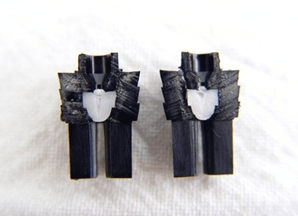
We have always offered the option for plug-less injection using our special stinger needle, which can be attached to all our systems. But for all the reasons listed above, injections with plugs are strongly preferred by most arborists who use Arborjet equipment and formulations. Plugless injections are sometimes used in the treatment of large numbers of trees, especially when away from human contact. While our guidance allows the choice of either method, the best practices, and the science dictate that we strongly recommend and advise the use of plugs during routine injection procedures.
Arborjet’s systems have always allowed for the greatest flexibility in Arboricultural plant health care, and plugs have been shown to be a very effective means to protect the tree, applicator and the environment, while allowing the most efficient treatment under varying conditions. The tools are here to provide you with choices, and while we recommend plugs, we are the only company which offers the technology to choose plugged and plug-less options. Please reach out to us for more detail.
Want to hear directly from the expert? You can sign up for this webinar on Arborplugs from the man who invented them, Joe Doccola.
Click here to watch a video about properly setting an Arborplug
This blog and its content was written by Rob Gorden, the director of urban forestry and business development for Arborjet, Inc.

